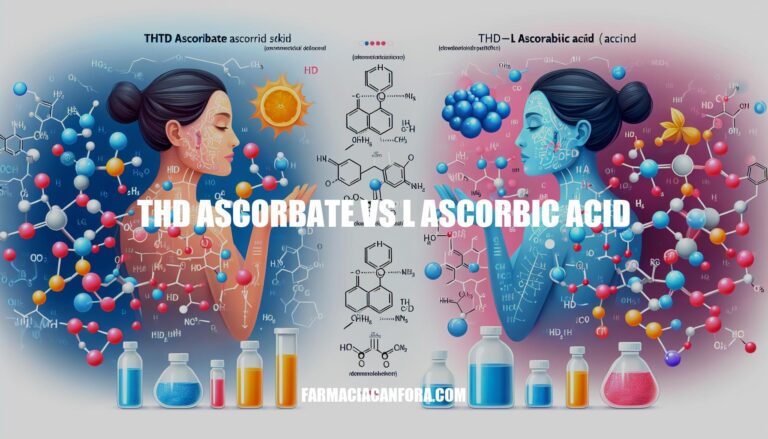


When it comes to skincare, understanding the differences between Tetrahexyldecyl Ascorbate (THD Ascorbate) and L-Ascorbic Acid is crucial. Both are forms of Vitamin C, but they vary in stability, skin penetration, and potential for irritation. Knowing these differences can help you choose the right product for brighter, healthier skin.
L-Ascorbic Acid (LAA) has the chemical formula
and is a water-soluble form of Vitamin C. Its structure includes a lactone ring with an enediol group, which is responsible for its antioxidant properties.
Tetrahexyldecyl Ascorbate (THD Ascorbate) is a lipid-soluble derivative of ascorbic acid. It is an ester formed by the reaction of ascorbic acid with tetrahexyldecyl alcohol, resulting in a more complex structure that includes a long hydrocarbon chain, making it oil-soluble.
Stability Comparison:
This increased stability makes THD Ascorbate a preferred choice in skincare formulations, as it maintains its potency longer and is less irritating to the skin compared to L-Ascorbic Acid.
Tetrahexyldecyl ascorbate (THD ascorbate) and L-ascorbic acid are both forms of vitamin C, but they differ significantly in their skin penetration and absorption properties.
L-ascorbic acid is water-soluble and highly potent, but it is also unstable and can be irritating to the skin. It requires a low pH to be effective, which can limit its formulation options and cause irritation for some users. Its water solubility means it primarily affects the outer layers of the skin and may not penetrate deeply.
THD ascorbate, on the other hand, is lipid-soluble, allowing it to penetrate the skin more effectively. This form of vitamin C can easily pass through the lipid-rich layers of the skin, reaching deeper into the epidermis and dermis. Its stability and compatibility with oil-based formulations make it less irritating and more suitable for sensitive skin. Additionally, THD ascorbate is converted into L-ascorbic acid within the skin, providing similar benefits without the associated drawbacks.
In summary, the lipid-solubility of THD ascorbate enhances its skin penetration and absorption, making it a more versatile and less irritating option compared to L-ascorbic acid.
Here’s a concise comparison:
Antioxidant Properties:
Collagen Production:
Both forms have their strengths, but THD Ascorbate’s stability and deeper penetration might offer additional benefits for some users.
THD Ascorbate:
L-Ascorbic Acid:
Tetrahexyldecyl Ascorbate (THD Ascorbate):
L-Ascorbic Acid:
Both forms of Vitamin C offer unique benefits and are chosen based on the specific needs of the skincare formulation and the desired outcomes for the skin.
Tetrahexyldecyl Ascorbate (THD Ascorbate) and L-Ascorbic Acid are both forms of Vitamin C, but they differ in stability, skin penetration, and potential for irritation.
THD Ascorbate is a lipid-soluble derivative that is more stable and less irritating than L-Ascorbic Acid, which is water-soluble and highly unstable. THD Ascorbate penetrates deeper into the skin, making it suitable for sensitive skin and anti-aging products, while L-Ascorbic Acid is best suited for non-sensitive, oily skin and requires a low pH to remain stable.
Both forms have their strengths, but THD Ascorbate’s stability and deeper penetration might offer additional benefits for some users.